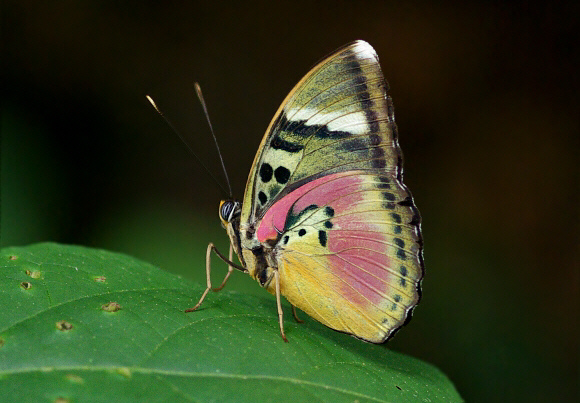
Introduction
The genus Euphaedra comprises of a yet to be discerned number of large and very beautiful forest-dwelling butterflies, all found on the African continent. In 1997 Hecq revised the genus and at that time listed a total of 180 species. This figure is challenged by other workers who believe that many of these are merely local forms or subspecies. However in 2012 Hecq produced a further revision of the eleus species-group, describing an additional 12 species, bringing the total in the genus to 192. When working in the field it is immediately obvious that there are a huge number of specimens that are noticeably dissimilar to any of the insect illustrated by Hecq but it is unclear whether these are examples of intra-specific variation, distinct taxa or hybrids.
All Euphaedra species share a common wing shape. Most have a similar pattern on the upperside – typically the basal areas of the wings ( particularly the hindwings ) have large suffused patches of metallic blue, green, orange or red. Most species also have a cream or orange sub-apical bar. The undersides are usually some shade of yellow or green, marked with black spots and streaks that vary in intensity and configuration according to taxon and locality. Many species also have beautiful pink patches or streaks on the underside hindwings.
Euphaedra hebes is a West African species found from Liberia to Cameroon and Gabon.
Habitats
As with all Euphaedra species, this butterfly is an inhabitant of tropical rainforest. It can be found at altitudes between sea level and about 500m.
Lifecycle
The larval foodplants are probably members of the Annonaceae.
Adult behaviour
Both sexes are strongly attracted to clusters of fallen fruits, particularly Ficus, and patrol back and forth across glades or along forest paths in search of them. They are usually encountered singly. In common with other Euphaedra species they are very alert, and if approached they fan their wings nervously before flying up to settle on a leaf in the shade, usually at a height of about 2m. Once the perceived danger has passed, they usually return to resume feeding.
